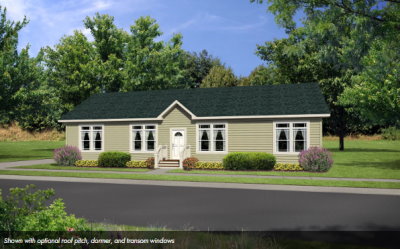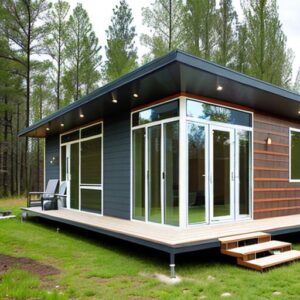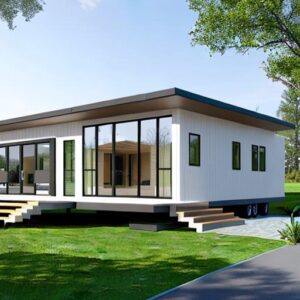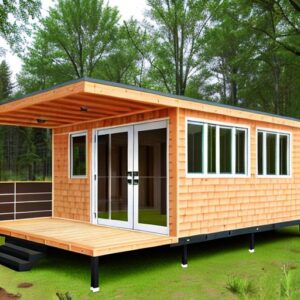- Structural Frame

- Exterior Finishes
Exterior finishes are often the last to be completed in traditional construction. However, things are slightly different in modular construction since the exterior finishes are handled much earlier in the process. Some of the exterior finishes include the installation of windows and doors, exterior light fixtures, and siding. A protective wrapping can be added later once the whole building process is complete to safeguard the quality of these finishes through transportation and installation phases. Other exterior finishes include shutters and decorative trim to add to the curb appeal and resale value of the house.
- Plumbing, Electrical, and HVAC Systems
After the exterior finishes are set in place, other utilities that are added to the unit include plumbing, electrical, and HVAC systems. This is done before working on interior finishes so that any loose pipes or wires can be concealed into the structure to leave a neat and streamlined surface to work with. They are then sealed properly in preparation for transportation before minor fixtures can be fitted on-site. Prefabricated plumbing and electrical systems can guarantee time saving of up to 60 percent when assembling installations in the building.
- Interior Finishes
Typical aspects such as countertops, walls, and flooring are some of the components that make up the interior finishes of a modular building. The beauty of modular construction is that it offers more customization options that go beyond the standard finishes of traditional construction. Full-service modular manufacturers ensure specific features such as furniture and appliances installed in each unit before it can be transported on-site. The interior finishes of a modular building can be provided with standard and cost-effective finishes or with elaborate custom designs to meet customer requirements and specifications.
- Marriage Joints
Another major component of a modular structure that holds the units together is known as marriage joints. Although these connections may not be visible, they are responsible for ensuring modules remained fastened in place to those around it to form a coherent building. Construction crews make sure that each unit of a modular building is secure as they are often lifted during transportation and lowered into place once they reach their designated location. Marriage joints allow the modular building to attach its utility systems during transportation and installation stages.
- On-site Foundation
Just like traditional construction, modular homes need to be installed on an on-site foundation even though the other parts of the structure are constructed off-site. Every modular building incorporates some elements of on-site construction to ensure ground stability or prevent the structure from shifting in place. Some of the processes done on-site include excavation, footings, and foundation. It contributes to the overall efficiency of modularization while other components are assembled in the manufacturing facility. Careful preparation is done on-site to ensure the installation process can be done within the desired period.
Once the modular building has been completed off-site and the foundation is ready, it is transported to the designated on-site location for assembly. The installation process takes a shorter time compared to traditional construction since most of the work has already been completed off-site. It is still possible to add other modules to the modular home after it has been installed making it a less expensive option compared to traditional construction methods of expansion and remodeling.



